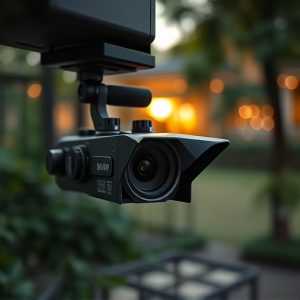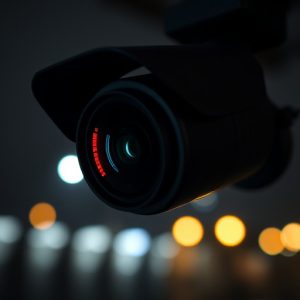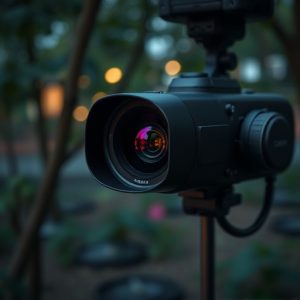Unveiling Hidden Lenses: Advanced Spy Camera Reflection Detection at Home
Spy lens reflections can expose indoor hidden cameras with night vision capabilities, revealing ghos…….
Spy lens reflections can expose indoor hidden cameras with night vision capabilities, revealing ghostly images or bright spots in footage. To combat this, security systems employ specialized infrared (IR) sensors and thermal imaging cameras to detect heat signatures and anomalies, locates cameras disguised as everyday items like light bulbs or smoke detectors. Advanced software algorithms adapt to diverse lighting conditions, enhancing detection efficiency. Conducting comprehensive inspections with IR cameras, cleaning glass surfaces, using anti-glare films, and installing privacy screens significantly enhance digital privacy by minimizing reflection points where spy cameras might hide.
Uncover the subtle signs of hidden surveillance with our comprehensive guide to spy lens reflection detection. Learn how to identify reflective distractions from indoor cameras, especially those equipped with night vision technology. We explore common methods, from simple visual inspections to advanced techniques, empowering you to protect your privacy at home. Discover strategies to mitigate spy camera reflections and stay secure in today’s digital landscape.
- Understanding Spy Lens Reflections: The Basics
- Common Detection Methods for Indoor Cameras
- Advanced Techniques to Spot Hidden Lenses
- Utilizing Night Vision Technology for Enhanced Visibility
- Preventing and Mitigating Spy Camera Reflections at Home
Understanding Spy Lens Reflections: The Basics
Spy lens reflections, often invisible to the naked eye, can be a telltale sign of hidden cameras, especially in indoor settings equipped with night vision capabilities. These reflection points act as silent betrayers, revealing the presence of covert surveillance devices. Understanding how these reflections form is crucial for detecting and identifying such hidden threats.
When an Indoor Spy Camera With Night Vision is positioned to capture images or videos, light from various sources, both natural and artificial, interacts with its lens. If there are other reflective surfaces nearby, like glass windows, mirrors, or shiny metal objects, the camera’s lens can reflect this light back onto the scene it’s recording. These reflected beams might create ghostly images or distorted views, often appearing as subtle glitches or bright spots in the footage—a clear indication that something is amiss and a spy lens could be at work.
Common Detection Methods for Indoor Cameras
In the realm of indoor surveillance, detecting hidden spy lenses or cameras, particularly those equipped with night vision capabilities, presents unique challenges. However, several advanced techniques have emerged to counter this clandestine threat. One common method involves utilizing specialized infrared (IR) sensors that can detect heat signatures emitted by electronic devices, including covert cameras with night vision. These IR sensors are often integrated into security systems and can pinpoint the exact location of hidden lenses within a room, making them effective against indoor spy cameras with night vision.
Another widely adopted approach is the use of visual inspection tools such as thermal imaging cameras and high-resolution video analyzers. Thermal imaging technology identifies temperature variations, helping to reveal objects or anomalies that might be overlooked by the naked eye. By scanning walls, furniture, and other potential hiding spots, security personnel can uncover indoor spy cameras disguised behind objects or embedded in surfaces. This method is particularly useful during night-time operations when visual clarity may be limited but heat signatures remain visible.
Advanced Techniques to Spot Hidden Lenses
In the ever-evolving world of surveillance technology, detecting hidden spy lenses, especially in indoor settings, requires advanced techniques to stay ahead of the curve. One powerful method is the utilization of specialized thermal imaging cameras that can detect heat signatures, making it possible to uncover hidden cameras disguised as everyday objects like light bulbs or smoke detectors. These tools are particularly useful for night-time operations, where traditional visibility might be limited, allowing users to take advantage of the enhanced visibility provided by night vision capabilities.
Additionally, advanced software algorithms have been developed to analyze video feeds in real-time, identifying subtle patterns and anomalies that could indicate the presence of a spy lens. These algorithms can adapt to various lighting conditions and environments, ensuring accurate detection even in complex indoor spaces. By combining thermal imaging with sophisticated software, individuals and professionals alike can effectively locate and neutralize indoor spy cameras with night vision, enhancing privacy and security measures.
Utilizing Night Vision Technology for Enhanced Visibility
In the realm of spy lens reflection detection, night vision technology stands as a game-changer. This advanced feature, often found in high-end indoor spy cameras with night vision, enhances visibility during low-light conditions, ensuring that even subtle reflections are not missed. By leveraging infrared sensors and image intensification, these devices can capture clear images or videos in complete darkness, making them ideal for discreet surveillance.
The integration of night vision technology in spy cameras allows users to navigate and monitor challenging environments with ease. Whether it’s a dark corner of a building or a hidden gap, these cameras can provide crucial visual information that might otherwise remain unseen. This enhanced visibility offers peace of mind, especially for security professionals and individuals prioritizing privacy and safety within their homes or commercial spaces.
Preventing and Mitigating Spy Camera Reflections at Home
To prevent and mitigate spy camera reflections at home, start by conducting a thorough inspection of your living space using advanced tools like infrared cameras to detect any hidden devices. This is especially crucial when dealing with indoor spy camera with night vision, which can be nearly invisible to the naked eye. Regularly cleaning windows, mirrors, and glass surfaces is essential to reduce reflection points where spies might hide miniature cameras.
Consider using anti-glare films or blinds over windows and applying privacy screens on doors and other glass panels. Additionally, strategically placing diffusers or reflective surfaces at angles can help scatter light, making it harder for spy cameras to capture clear images. Staying proactive and adopting these measures significantly enhances your privacy in the digital age.
In conclusion, detecting spy lens reflections is a multifaceted approach that combines understanding basic principles with advanced techniques. From recognizing common indoor camera placement to leveraging night vision technology, homeowners can significantly enhance their privacy. By staying informed about the latest detection methods and taking proactive measures, such as preventing and mitigating reflectivity, individuals can safeguard their homes from hidden cameras like indoor spy cameras with night vision.


